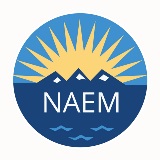New Standards to Bring Clarity to Sustainable Purchasing

GT: How has the demand for supply chain data changed how companies relate to their suppliers?
AO: Many companies are realizing that they have significant environmental and social risks beyond their own operations, in their supply chain. So they approach issue by first trying to find information by surveying their suppliers. The supplier, therefore, is getting many, many different surveys from big (and small) customers. They are getting frustrated because the questions are overlapping, sometimes worded slightly differently, span a wide range of different issues and are generally rather confusing. In addition, suppliers wonder what their customers really do with the information that they get back. Does it help the suppliers in any way to provide that high-quality information? Is it worth the investment? Companies and their suppliers are in a learning phase and there is not a lot of standardization (yet).
GT: Are companies providing technical assistance to their suppliers?
AO: Some companies do — they see it as part of their responsibility. Some of them are engaging suppliers and teaching them what's important, not only asking for information, but also helping to invest in the changes that they want to see happen. They're saying, 'We want to phase out this chemical or this material, but we're going to help you do that. We know it's expensive to do it so we are giving you the certainty that it will be rewarded, and technical assistance to make the changes.' As a result, much deeper relationships are being forged. For other companies, it's still very much a 'check-the-box' approach. Their customers or investors are asking them these questions, so they find out from their suppliers and pass the information back up the line. So some companies are taking a very thoughtful and risk-based approach to this to generate some business value out of it, but it's not always the case.
GT: Some companies have thousands of suppliers. How can they possibly have engaged relationships with all of them?
AO: Right — the fact that some companies have a really large supplier base prompts a 'check the box' approach, which is understandable. But they needn't be mutually exclusive. One approach is to look carefully at risks, prioritize, and think about what are the focal areas that you really want to improve on? Where are the risks in your supply chain, and which of those are your biggest contractors? Which are your biggest suppliers? And which are those that you think you can change? You're not going to be able to use the same strategy with all of them so you're going to have to decide where you're going to focus to get anything done. Then you might complement a supplier engagement program on those areas you have designated as of more importance, with a broader survey-based approach that hits on the core metrics you care about.
GT: Is sustainable purchasing going to be the defacto standard going forward?
AO: Some purchasers in government agencies in Europe and the U.S. now have 15-20 years experience in building sustainability into their purchasing process (including requirements and supplier evaluations). Others are really just beginning. A study I conducted for the United Nations Environment Programme (UNEP) found that in 2012, some 56 national governments now have an agency with a sustainable or green public purchasing policy in place. State and local governments, hospitals, schools and universities are also now building out their sustainable purchasing practices substantially, beyond buying recycled paper. They are asking questions of their vendors on substances of concern, on local and regional food sourcing, on what standards and ecolabels they are certified to, and so on. Companies are also instituting sustainable purchasing practices across quite a wide range of industries. On the whole, though, there is still a long way to go before it's a fully integrated and functioning practice, and I would say it's still in its adolescence.
GT: What is the Sustainable Purchasing Leadership Council? What are your goals?
AO: The Sustainable Purchasing Leadership Council (SPLC) is an independent, 501c3 nonprofit multi-stakeholder organization, which was formed in 2013 but is based on five years of work done by The Green Products Roundtable, a multi-stakeholder initiative facilitated by the Keystone Group. To date, the SPLC is funded by a Founders Circle of 30 organizations, and we are now open to general members. The mission is to support and recognize purchasing leadership that accelerates the transition to a prosperous and sustainable future.
We see many parallels between sustainability purchasing and the state of the green building practices prior to the launch of the U.S. Green Building Council (USGBC) LEED certification. That is, many different rating and survey tools, a lack of standardized definitions of what is greener, a lack of a clear path towards doing green building well. For sustainable purchasing, we think there is also an opportunity to provide guidance and recognition. We think that the best way to solve this is through a multi-stakeholder process to come up with common ratings, definitions and programmatic activities. For purchasers or as customers this means we're guiding organizations towards using the same sorts of approaches and learning from each other. As a group, we can provide answers to questions such as: 'How do you meaningfully engage your supply chain?', 'What information is really relevant and should be prioritized?' 'What do you do with the answers you get back from suppliers?' and 'How do you do this at scale?' We think a common approach will really help all organizations involved in making, buying and selling more sustainable goods and services, and that this could be transformative.
GT: What kinds of groups are involved in this initiative?
AO: Companies that both manufacture goods as well as those who purchase goods; governments (who are big purchasers); the nongovernmental organization community; market referees (who set the standards and certifications); consultants (who are responsible for implementing these standards in different organizations); and certifiers (who verify that products and services are meeting standards). We wanted to pitch a big tent, and we've worked a lot on the governance processes to make it a fair and open process. One of the big things we're doing is to create a sort of rating and recognition system for sustainable procurement. We looked at the success of LEED and asked ourselves, 'Can we do the same thing with green purchasing? If you do a really good job with green purchasing, can we measure it, rate it and recognize it?' We think that will be really motivating, and we look forward to more organizations joining us. If people are interested, they can look at the SPLC's website www.purchasingcouncil.org or get in touch with me directly at anastasia.orourke@dekra.com.
About the Author

NAEM Staff
The National Association for Environmental, Health and Safety, and Sustainability (EHS&S) Management (NAEM) empowers corporate leaders to advance environmental stewardship, create safe and healthy workplaces and promote global sustainability. As the
leading business community for EHS&S decision-makers, we provide engaging forums, a curated network, peer benchmarking, research insights and tools for solving today’s corporate EHS&S management challenges. Visit us online at naem.org.



